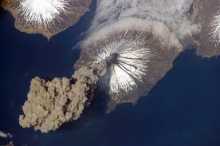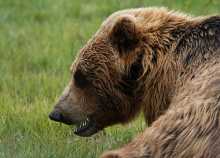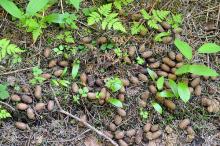Even though it has been over twenty years since I moved away from Alaska, when February approaches I always think "
Fur Rondy time!"
The official name is "The Fur Rendezvous Festival," but everyone just calls it "Fur Rondy." Mostly because "rendezvous" is a difficult word to spell, but also because it's not easy to decide how to pronounce it. You can pronounce it the right way, the French way, and come off like an effete hoity toity smarty pants. Or you can pronounce it the local way, the American way, and sound like some kinda redneck hick.
Or just call it "Rondy." That's safer.
In a nutshell, Fur Rondy is the practice of putting kids on fairground rides in 20 degree weather. Doesn't that sound great? Brisk! Invigorating!
Let me tell you something: vomit freezes really fast at 20 degrees. And it doesn't melt, either. What are they supposed to do? You can't hose it off, the hoses are turned off for the winter. You could try rinsing it off the pavement with a bucket of hot water, but then the water will freeze and turn your walkway icy, and someone will slip and fall and sue your ass.
The festivities also include a fireworks display. Which is actually pretty cool, because in Alaska you don't get a lot of chances to see fireworks. There isn't actually any darkness for the Fourth of July, so the obligatory twilight fireworks are a huge disappointment. But in February we have nothing but darkness. You can start your fireworks display at 6PM if you want, it's plenty dark by then. Temperatures will have fallen well below zero, but you can start 'em.
The Fur Rondy also comes with collectible lapel pins. Typically there are two pin styles: a cheap button-maker kind, which has a design created by an Anchorage school child and chosen by committee. And a more expensive, fancy button, made of nice metal with cloisonné. Every year, there is a lot of anticipation about the buttons. Are they for sale yet? Have you seen the designs? Where did you get yours? Oh, I went there, but they were sold out.
Unfortunately, the awesome pins also give rise to a hugely obnoxious practice, which is (predictably) terrifying to small children. If you get caught by one of the mock-police on Fur Rondy grounds without a button, you can be put in "jail" until you get "ransomed" by purchasing a button.
But hey, what wintertime festival would be complete without a dose of potential childhood terror and trauma?





